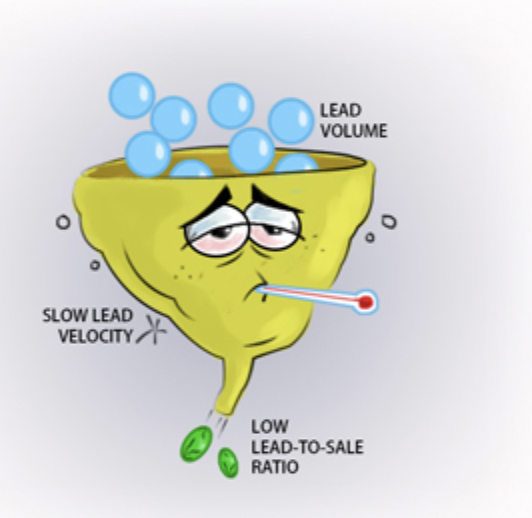Content analysis is a marketing task that is never truly finished.
You need to revisit your old content on a regular basis to determine what should be updated, which new visibility opportunities can be pursued, and how to better optimize it for more conversions.
With that in mind, there is no set list of content analysis tools that you should use repeatedly. New tools bring with them new methods, and thus new ideas. But here are a few tools and tactics I use to evaluate my content and my clients over time.

1. Did I Overlook any Keywords in my Content Analysis?
When I evaluate the performance of my existing content, I begin by identifying which keywords I have overlooked. This can be difficult if my client is not running ads, which many choose not to (against my best advice!)
One of the most important content marketing questions is addressed by content gap analysis: which topics and questions did I fail to cover and answer when creating that content?
It is usually a multi-step process in which you must:
- Determine competing URLs
- Conduct an organic analysis of your current positions.
- Compare rankings to yours and determine which keywords your URL does not rank in the top 50 for.
- Serpstat is a SERP analysis platform that reduces the entire process to a single step: simply enter your URL into their Missing Keywords tool, and it will generate a useful content analysis report that will do the above for you automatically. (It does have a monthly fee.)
If your URL does not rank in the top 50 for search queries, competing pages are generating traffic from them, not you. I recommend trying the 7-day free trial of Serpstat and see if it makes sense to you. Not everyone has the tenacity to go through this report regularly or the time to make the necessary changes to their content.
Be aware of other URLs from your domain that rank for queries – internal organic competition, or keyword cannibalization. This latter report section is a time saver for established blogs that tend to have a lot of content on similar topics.
The report can also be filtered by search volume, competition strength, and any keyword in the query.
The downside to Serpstat is it’s reports tend to have so much information, you can easily get sucked down a rabbit hole and end up working on all of the “Other URLs” as well to try to push them higher in the SERPs. Focus, focus, focus!

2. Who Will Enjoy This Page's Content?
Another fundamental question to address is whether your page meets the expectations of the users. In other words, have I optimized for search intent?
Not only does search intent play an important role in engaging your visitors, but optimization for intent can also help you rank higher. This is because Google has learned how to determine whether your page is meeting the needs of users when determining how high it should rank.
Text Optimizer is a semantic analysis tool that searches Google for your query, grabs search snippets, and identifies words and phrases that Google associates with this specific search intent.
Text Optimizer can help you optimize your content for search intent for any given query.
Simply enter your query and provide the URL of your page: the tool will perform a Google search for your query and identify which related concepts should be covered in your content to better meet Google’s (and its users’) expectations. Include 20-25 of these concepts in your copy to improve its search intent optimization.
Their free option is very limited, so you won’t get the full sense of this tool’s potential without signing up for a trial. (Just set a reminder for day 6 if you intend to cancel!)

3. Is My Landing Page Passing the 5-Second Content Analysis Test?
What is the very first impression your page makes when visitors arrive? Is it immediately obvious what the page is about? Are CTAs prominently displayed on the page? Is the goal obvious?
According to studies, most people only need a few seconds to decide whether to stay or leave a web page. This time frame is getting even shorter in today’s fast-paced digital environment, where most people browse the web on the go.
This makes the quality of your content almost secondary: most people won’t even see it unless they are immediately compelled to stay. This is where the 5-second test comes in: allow a stranger to look at your page for five seconds before asking one simple question: “What was this page about?” or “What are you supposed to do on the page?”
This test is free to run if you recruit your own testers. But if you want to set up tests online, try Usability Hub. Their 5-second tests are helpful, but be ready for some hard realities about your page. These testers are anonymous and will be brutally honest. Put your ego in time-out before you run tests. You will receive objective feedback.
I do this for my clients, which isn’t for everyone. I always warn new potential clients that paying my fees does not mean I’m going to suck up to you. (That’s what corporate marketing and big agencies are for!) My best advice is not to fall madly in love with your product or website. That’s when you will lose objectivity and only create a product and website for yourself.

4. What Distracts Users from Continuing Down My Conversion Funnel?
First, you need to have a clear conversion funnel. Dropping someone onto a landing page and expecting them to immediately convert is foolish and a waste of your marketing team’s time and effort. Very few visitors are ready to buy on their first visit to your website. Stop kidding yourself and build for their customer journey, not your sales goals.
Aside from understanding the first impression your users have when they land on your page, it is also useful to know what exactly distracts them. Running a heatmap test is the simplest way to collect this data.
A heatmap is a visual representation of user behavior on a website, such as scrolling, clicking, mouse movements, and so on.
You can see where visitors move on your site. HotJar tracks cursor movements on your page so you can figure out what draws your users’ attention. Most people look where their cursor moves, so move maps can give you a good idea of where people look when they land on your page.
There are several platforms for running heatmap testing, as well as several WordPress plugins that integrate heatmaps into your A/B testing routine. Unless you have extremely heavy traffic, you can often run simple move map testing for free.

5. What Is Interrupting the Flow of Your Conversion Funnel?
You’ve most likely included a few CTAs in your content, each of which leads your visitor down the conversion funnel, from clicking to opting-in to finally purchasing. Which of these steps is lowering your conversion rate?
On WordPress, there is a comprehensive guide to tracking conversions. Finteza is a free web analytics tool that lets you track multiple events on a single page and how they interact with one another.
Track all conversion-focused links in your content, such as clicks to lead magnets, form fills, and clicks-to-call.
Your Content Analysis: Putting It All Together
There are many traffic acquisition and conversion optimization strategies. With so much testing and analyzing, how do you go from analyzing to implementing?
When I work on old content, I treat it as if it were a new marketing campaign. When I come across an existing article or landing page that needs some work, I add it to my project manager as a new content project.
If you don’t have a system to plan and track your marketing campaigns and projects, you can use a simple spreadsheet. I use one for each client to communicate what we’re working on each week when we have our regular calls. Internally, we use Asana internally, but project management software is just “one more tool” that clients don’t really like to deal with.
As you do your own content analysis, add each project to your spreadsheet. You can set deadlines for each and assign if you share the sheet with your key team members. This way, you won’t just research, learn, and forget.

Rinse, Lather, Repeat!
Taking initiative to correct content problems is step one. Note your baselines before the correction. Repeat this research regularly to look for improvements. This will take time.
Most businesses want marketing to magically fix things, but just like sales, it doesn’t happen overnight. In fact, if you are a B2B company, focusing on content analysis will help you sell more overtime given that only 5% of buyers are actively in the immediate market in any given month.
Like we do for our clients, take time to optimize your digital content for buyers at all stages of your funnel with concentration on the top of the funnel. While the middle of the funnel is where qualified leads will convert, the bottom of the funnel content is important too as it supports sales closes.
If you just don’t have the time, interest, or skills to tackle this AND continue optimizing your content regularly, consider outsourcing. We help take the high maintenance tasks off your plate and execute them regularly. Schedule a call today.

